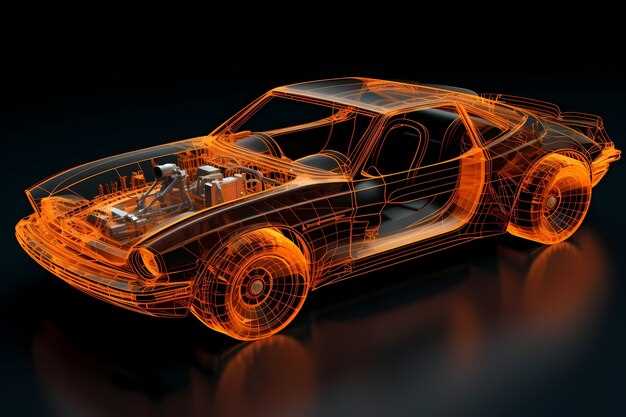
The world of motorsport is constantly evolving, demanding innovative approaches to enhance vehicle performance. One of the critical areas where technology has made a significant impact is in the design of race car aerodynamics. Aerodynamics plays a vital role in determining a car’s speed, handling, and overall efficiency on the track. As teams strive for every fraction of a second advantage, Computational Fluid Dynamics (CFD) has emerged as a powerful tool to optimize aerodynamic features.
CFD allows engineers and designers to simulate airflow patterns around race cars in a virtual environment, enabling detailed analysis of how different shapes and components influence performance. This technology facilitates the exploration of numerous design options without the need for extensive physical prototyping. By examining how changes to the design affect aerodynamic efficiency, teams can make informed decisions that translate into faster lap times and improved stability at high speeds.
As a result, CFD has transformed the way race cars are developed. The ability to visualize complex aerodynamic phenomena, such as lift, drag, and vortex formation, empowers engineers to refine the Aero elements of a car, from the front wing to the rear diffuser. The integration of CFD into the design process not only accelerates innovation but also enhances competitive advantage, making it an indispensable tool in the pursuit of racing excellence.
How CFD Simulations Enhance Downforce and Reduce Drag
CFD, or Computational Fluid Dynamics, plays a crucial role in optimizing the aerodynamics of race cars. These simulations allow engineers to visualize how airflow interacts with various surfaces of the vehicle, facilitating precise adjustments to enhance performance. By simulating different aerodynamic configurations, engineers can identify designs that maximize downforce while minimizing drag.
Increasing downforce is essential for improving tire grip and cornering capabilities. Through CFD analysis, specific areas such as the front and rear wings can be fine-tuned. Adjustments to the shape and angle of these components can lead to significant increases in downforce, which translates to better stability at high speeds. Furthermore, CFD allows for rapid testing of multiple variations, enabling teams to innovate quickly in a competitive environment.
On the other hand, reducing drag is equally important for optimizing overall speed. CFD simulations help identify areas where airflow can be streamlined, minimizing resistance. By analyzing the flow patterns around the car, engineers can modify components like side mirrors, underbody designs, and even wheel shapes to create a more aerodynamic profile. The integration of these insights allows for the creation of a balanced aerodynamic package where downforce and drag work in harmony.
Moreover, the predictive capabilities of CFD mean that race teams can conduct virtual experiments that would be costly and time-consuming in the physical world. This efficiency leads to a faster development cycle, allowing teams to implement improvements on the track sooner. Ultimately, the synergy between enhanced downforce and reduced drag achieved through CFD simulations significantly contributes to enhanced race performance, making it an invaluable tool in modern motorsports.
Integrating CFD into the Design Process for Optimized Aero Components

Computational Fluid Dynamics (CFD) has revolutionized the way race car engineers approach the design of aero components. By simulating the airflow around a vehicle, CFD allows for a deep understanding of the aerodynamic characteristics of various designs before any physical model is created. This integration into the design process leads to significant improvements in performance and efficiency.
Incorporating CFD begins at the initial design stages. Engineers can create multiple iterations of aero components, such as wings, diffusers, and body shapes, and simulate their performance in a virtual environment. This iterative process enables teams to identify the most effective shapes for reducing drag and increasing downforce.
Strong collaboration between aerodynamicists and designers is essential for maximizing the benefits of CFD. By sharing insights from simulations, designers can make informed decisions that enhance overall vehicle performance, ensuring that each component contributes to the car’s aerodynamic profile.
Once optimal designs are established, the use of CFD continues throughout the development process. Engineers can refine designs based on specific racing conditions or track characteristics, allowing for tailored solutions that increase competitiveness. This adaptive approach also supports ongoing improvements after the initial design, as CFD can be employed to troubleshoot and enhance existing components.
Moreover, the visualization capabilities of CFD lead to clearer communication within teams. Using graphical representations of airflow, engineers can quickly convey complex concepts related to aerodynamics, facilitating better decision-making and fostering a culture of innovation.
Ultimately, the integration of CFD into the design process for race car aero components not only accelerates development timelines but also creates a robust framework for optimizing performance. By leveraging the power of simulation, teams can stay ahead of the curve in the highly competitive world of motorsport.
Real-World Case Studies: Success Stories of CFD in Race Car Performance

Computational Fluid Dynamics (CFD) has revolutionized the way race cars are designed, playing a crucial role in enhancing their aerodynamic performance. By simulating airflow over a vehicle, teams can optimize various aspects of their designs to gain competitive advantages on the track.
One notable success story comes from a leading Formula 1 team that utilized CFD to refine their aerodynamic components. By simulating different front wing configurations, the team was able to identify the optimal angle of attack that maximized downforce while minimizing drag. The results translated directly to improved lap times and better handling characteristics, demonstrating how CFD can lead to tangible performance gains.
Another example can be found in the world of endurance racing. A manufacturer introduced a new race car, leveraging CFD to innovate its rear wing design. Through precise simulations, they determined the most effective shape and size for the wing, achieving significant improvements in aerodynamic efficiency. The enhanced aero balance allowed drivers to maintain higher speeds in corners, ultimately leading to a podium finish in a prestigious 24-hour race.
In sports car racing, a well-known outfit employed CFD analysis to optimize airflow around their vehicle’s chassis. By understanding how air interacted with the car’s surfaces, engineers were able to implement effective cooling solutions for the engine and brakes while maintaining an aerodynamic profile. This dual focus on performance and reliability resulted in not only quicker lap times but also fewer mechanical failures during races.
These real-world examples highlight the transformative influence of CFD in race car design. Thorough aerodynamic analysis allows teams to create vehicles that not only excel in speed but also in handling and stability, cementing CFD’s position as an indispensable tool in modern motorsport engineering.












